Rig mechanics is a simple subject really! You don’t have to be an astrophysicist or brain surgeon to tie a rig that will catch a carp!
After all, through a simple process of experimentation and tinkering it’s easily possible to create rigs that will adequately perform specific tasks in relation to how they sit on the lakebed (in a nice subtle and unobtrusive manner) and how they react during that critical instant they are inhaled by a carp and the hook is inside the fish’s cavernous mouth.
This is the finite moment when the rig needs to mechanically react and give you the best possible means of taking a firm hook hold. After all good hook hold will inevitably mean more fish on the bank.

Variations need to take into account bait size and whilst some will work with standard sized hook baits, some smaller baits inevitably need a more delicate and diminutive presentation. If the lake you fish is
Massive!
Personally, if I had to stick with one just one rig for all eternity that would have to be my baby – the Terry Hearn Hinged Stiff rig. No other presentation since the original hair has spawned so many other excellent rigs. After all most the popular hinged rigs that incorporate various materials for boom sections and even the mighty Chod rig evolved from the hook section of this little baby. Mechanically it’s somewhere between awesome and fantastic!
The use of a high memory curved hook section – such as Gardner Trip Wire enables a gentle curve to be created that will stay in place during the cast and ensure that the hook twists as the fish picks it up and positions the hook bait (thanks to the gentle curve) in the best possible place to nail the carp.
Fished in the original format of a looped monofilament boom section – which incidentally is best tied with a low memory material like new Gardner Trick Link or a heavy Fluorocarbon like 30lb Mirage (0.52mm and indestructible in tests my fussy (fastidious) friend Lil’Nige and I carried out a couple of winters ago) the hook baits movement is unencumbered in terms of how it settles down and the bait being able to move freely when the hook bait is sucked into the fishes mouth…
Both the Fluorocarbon and Trick Link are extremely robust, yet settle wonderfully onto the lake bed holding the hook bait away form the chosen lead system – which leads me smartly onto lead systems…
I have caught using an inline lead and a hinged stiffy – but 99% of the time it really does need to be either a helicopter or Covert Lead Clip style lead arrangement to ensure that the rig is offered the maximum potential to settle flush to the lakebed. If you do use an inline then you have to be absolutely certain that the rig is presented on hard flat spots otherwise there is a real risk of the hooklink being kicked up off the lakebed. Can you think of a worse presentation – and one that any carp with two eyes and barbules will be able to suss in a millisecond!
Personally – I’m confident that if the carp are eating boilies then this rig will catch them. It’s that simple!
It’s not an ideal presentation for fishing over large beds of baits simply because the hook bait is fished between 2 and 3 inches off the lake bed and if carp are feeding hard on particles then they often feed with their lips tight top the lakebed not moving their head around a great deal. They are not being clever – that’s just the way they feed when they are on this type of food.

Instead, use this one over boilies and a spread of larger particles (like nuts if your water allows them) – as this way the fish tends to lift his or her head off the lake bed after picking up a few tasty morsels. This greatly enhances the rigs performance as a fish that is moving around is far more likely to hook itself whilst feeding.
As with any modern rig there are a few tweaks that can make the difference between tying a decent rig and really getting the most out of it. It goes without saying that hook point are critical – and you need to check that the points are still perfect after each cast or fish captured. A little tweak with a Point Dr can make a hell of a difference.
Like wise the balance of the hookbait (how slowly it settles down is a detail you should consider… If you’re dowsing your hookbaits in a heavy liquid such as Minamino or Aminol you need to be aware that the hookbait will gain buoyancy as the glug dissipates off and out of the hook bait – so add a little extra Critical Mass to compensate otherwise you could end up with a really nasty off the lead presentation!
The bare bones of the rig – the thing that really sets this rig apart is that hook section. The D style method of mounting the hook bait means that the hook goes in bend first and act as the perfect pivot point should the carp try to eject the hook bait putting the point straight down onto the fish’s lip – a mechanical action that is enhanced by the gentle curve of the hook link and making sure thta the D is straight on the back of the shank…
Oh, did I mention… gentle curve…. To be frank, I look at some of the recommended acutely angled rigs being recommended and would suggest that they look far more obtrusive and also restrict the potential gape and hooking potential the rig offers. Keep with a straight point (Covert Chod hook of course!)and a gentle curve and you won’t go far wrong.
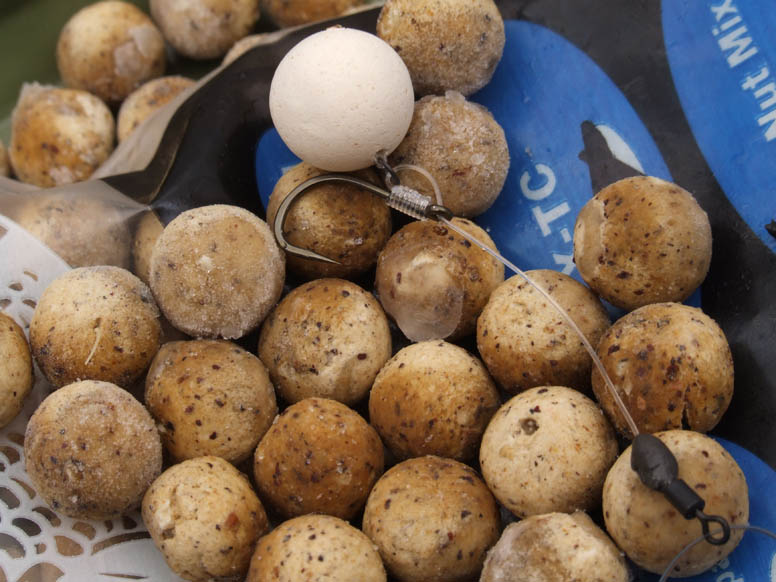
So what do you do if you want to fish a more refined arrangement without compromising this very specific and effective rig mechanics?
Micro!
The format of the classic hinged stiff rig is phenomenally effective BUT in reality isn’t ideally suited for fishing over a carpet of tiny baits or with really small hookbaits.
The small hookbaits don’t tend to have the buoyancy needed to hold the hook section upright (just like chod rigs this is important to avoid hook pulls) and tying the hook section ultra short still places the hook bait at least an inch above the level of the hook bait. Well with a bed of small particles that might as well be a mile if the fish are feeding with those lips tight to the lakebed.
Being keen on D rigs I was keen to explore an alternative method of creating the superior hooking mechanism without different hooklinks, and whilst I could do it with skinned hooklinks to say it was fiddly would be a gross understatement. Even finishing off the ‘D’ was again in the proverbial…
Enter the new D style Covert hook aligners. They are a really simple method of creating a lovely tidy D style hook bait mounting but now I could marry this presentation with skinned and plain braids and the gentle inward curve of the built in kicker meant that the hook link exited at an angle that would mechanically force the hook to twist but didn’t impair the hooking potential by reducing the gape of the hook. The kicker in this range has purposely been kept as small as possible simply to keep the terminal tack as tidy and minimalist as possible.
If a fish is feeding close to the lake bed on a bright morning in clear water you want your tackle to stand out like a sore thumb do you!
With the hookbait mounted on a Covert Pop-Up Hook Aligner I can choose to fish either plain bottom, balanced bottom or buoyant hookbaits – with the latter nice and tight to the lakebed. As you have done away with the swivel and all the other additional accruements of the hinged stiff rig you can naturally get away with much smaller (and less buoyant) hook baits. It can also be set tight to the lake bed with the counter weight (either a shot or tungsten putty set only a couple of mm away from the end of hook aligner…
His means the hook and bait is near to the lakebed so it has the maximum chance of being mistaken for a freebie. It also means that the vital mechanics of the hook – the way it enters the carp’s mouth and then how it reacts as the hooklink lightens across the fishes lip or whilst being ejected is uncompromised!

In this sense it is almost on a par with the hinged stiff rig, but when combined with a small hook is much more subtle, neater and better suited to small bit bait situations. A perfect combination would be a small Pop Up Hook Aligner with a size 8 or 10 Covert Incizor. A wicked combination that works with small trimmed down pop ups or bits of fake corn and maize.
Personally I like to use it with a skinned hooklink (looped connection at lead end for added movement) and have found the hook hold have been exceptional! In fact, dare I say, almost as good on my beloved hinge stiff rig![gasps of horror form those that know me!!]
The Hinged Stiff Rig – Four Key Points When Tying-Up The Rig
1. Tying the loop on Trick Link using the recommended ‘None Slip Loop Knot’ (blobbed for extra security). Incidentally this is also a much better strength loop knot with Fluorocarbon than either the perfection or fig.8 Loop knot…
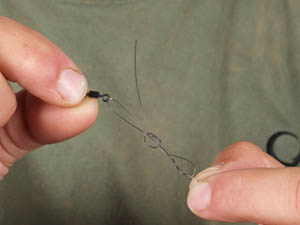
2. Trim excess off of loop.

3. Tie on Trip wire hook section with three turn blood (prior to blobbing and seating down tight to the swivel eye).
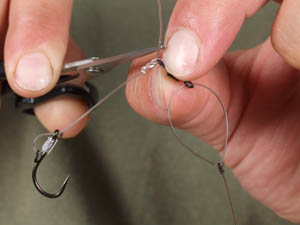
4. The easiest way to mould putty onto the swivel – form it into a long cone – push through the swivel eye and mould from there by wrapping…
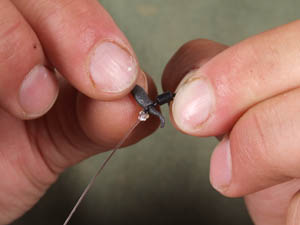
How To… Use A ‘D’ Style Covert Hook Aligner
1. Add a large Covert Rig Ring (3mm) onto a Covert Pop Up Hook Aligner and thread onto hooklink using a lead core splicing needle.
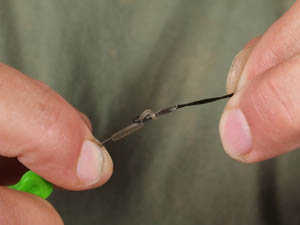
2. Push up onto hook and position the hook aligner as shown with the D sat straight on the back of the hook shank.
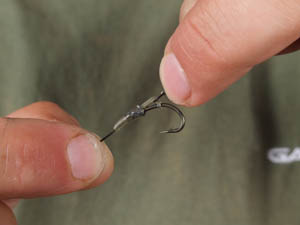
3. Break the skin at the right that you require the pop up to be set.
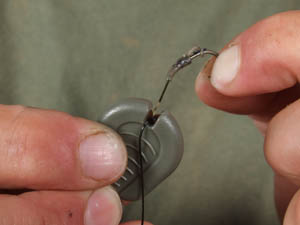
4. Mould sufficient Critical Mass Putty on the hook side of the break to ensure the hook bait sinks and enhances hooking potential of the rig…
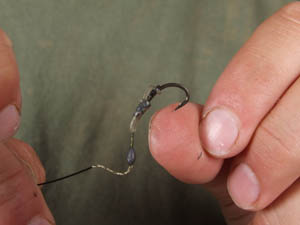


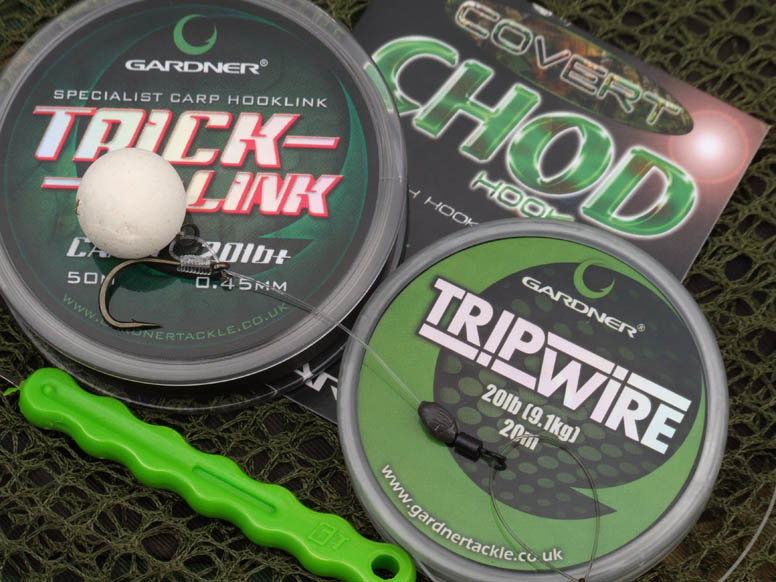
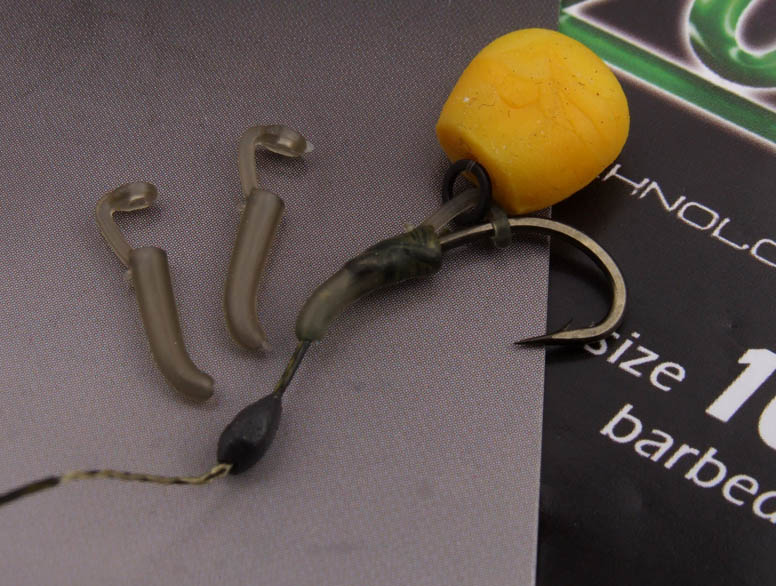
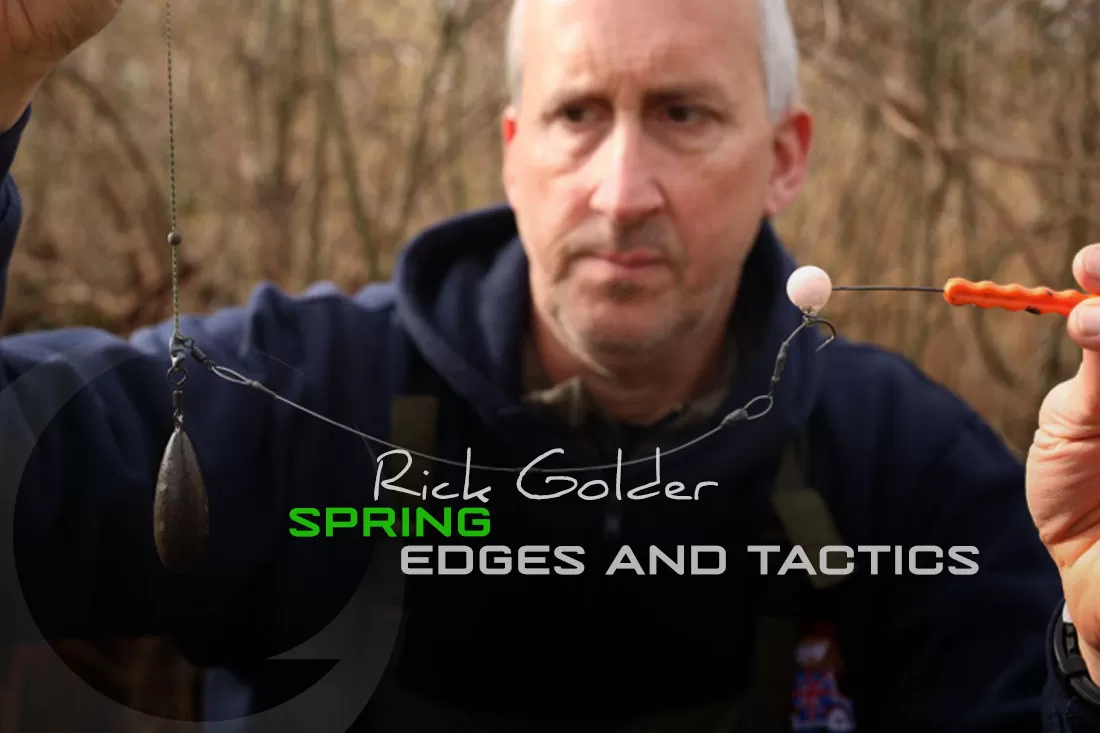
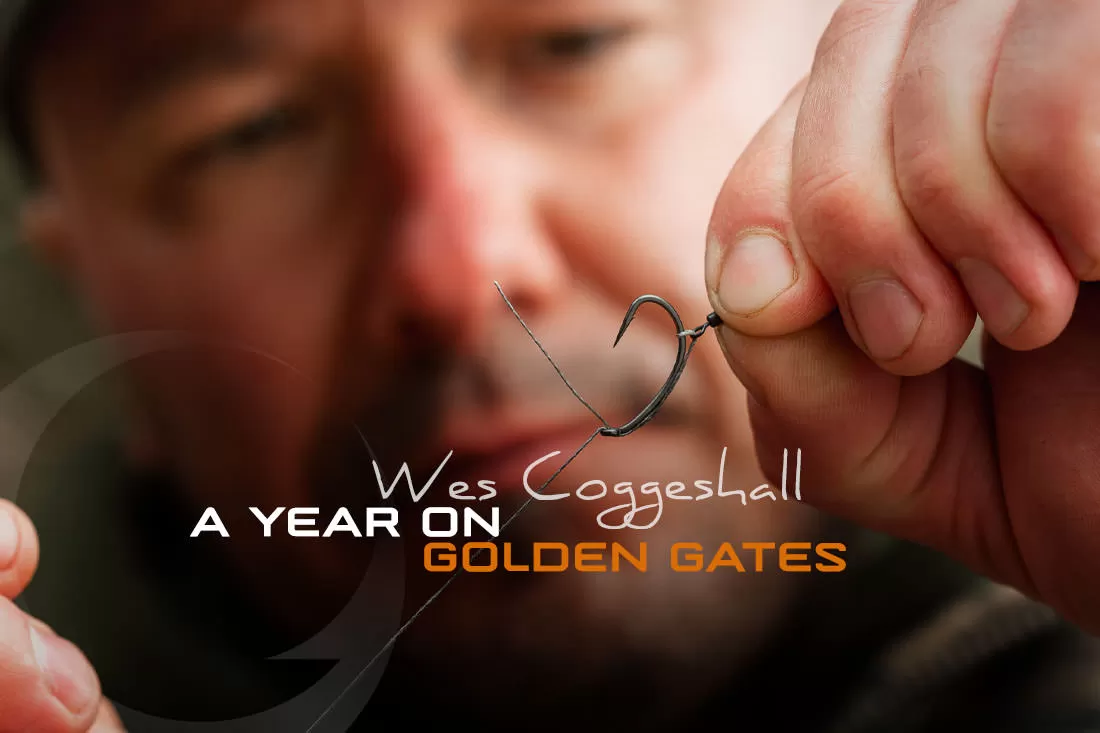
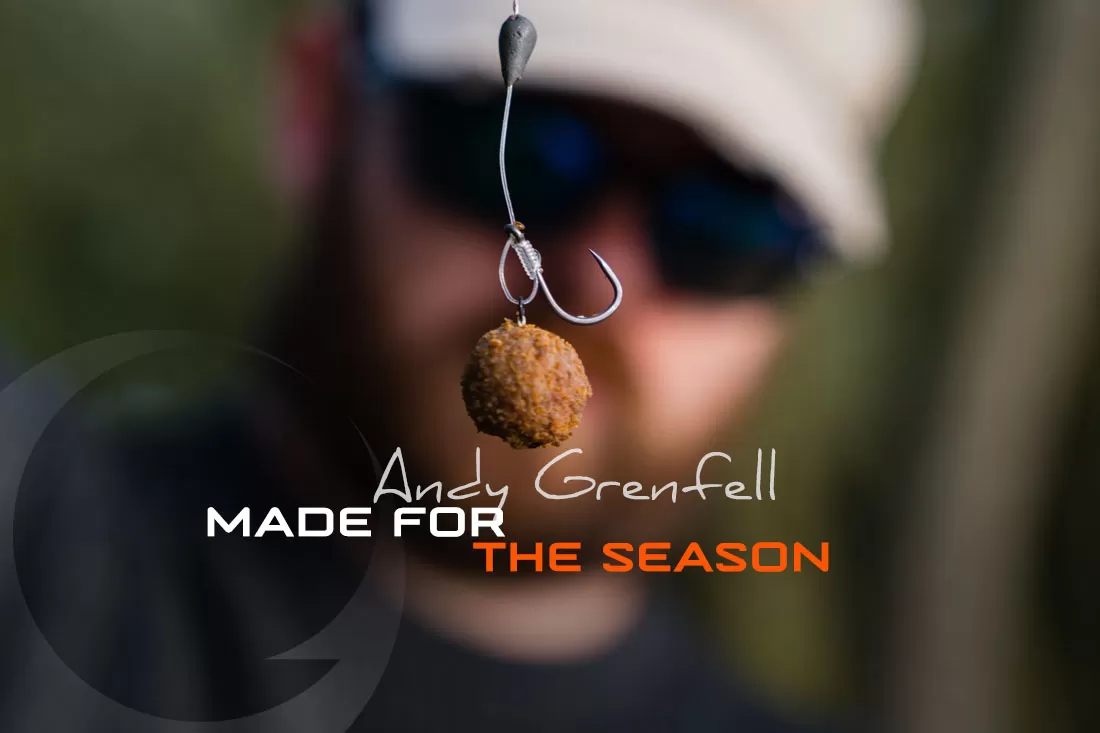
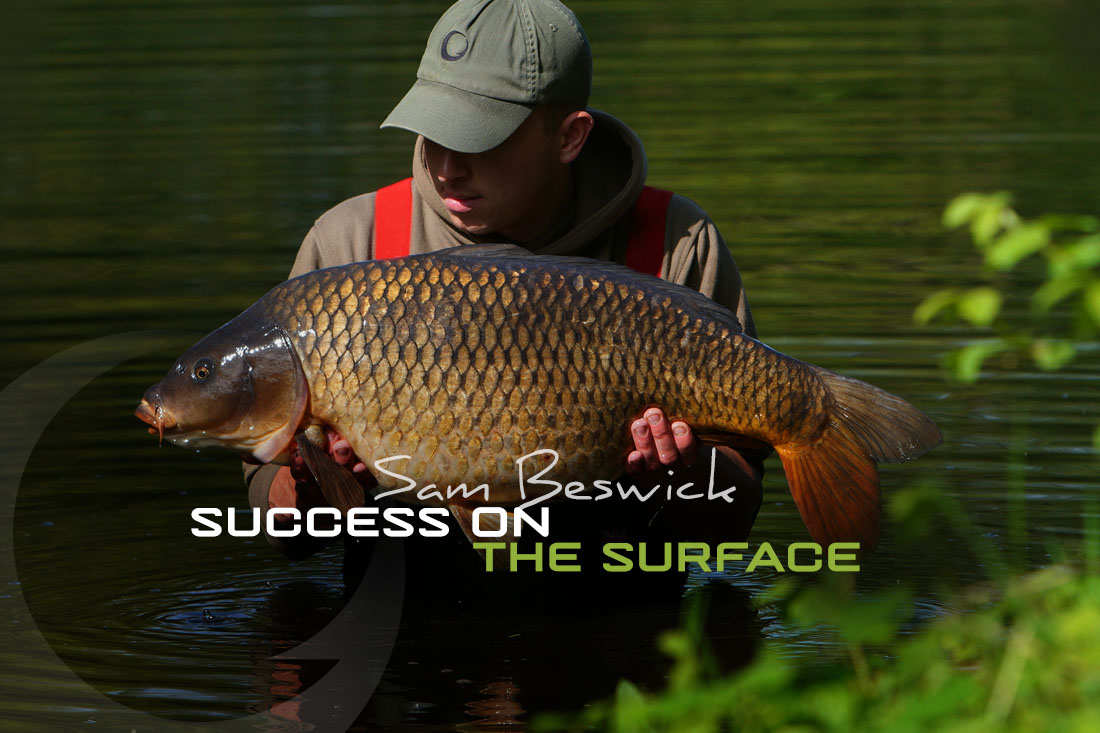
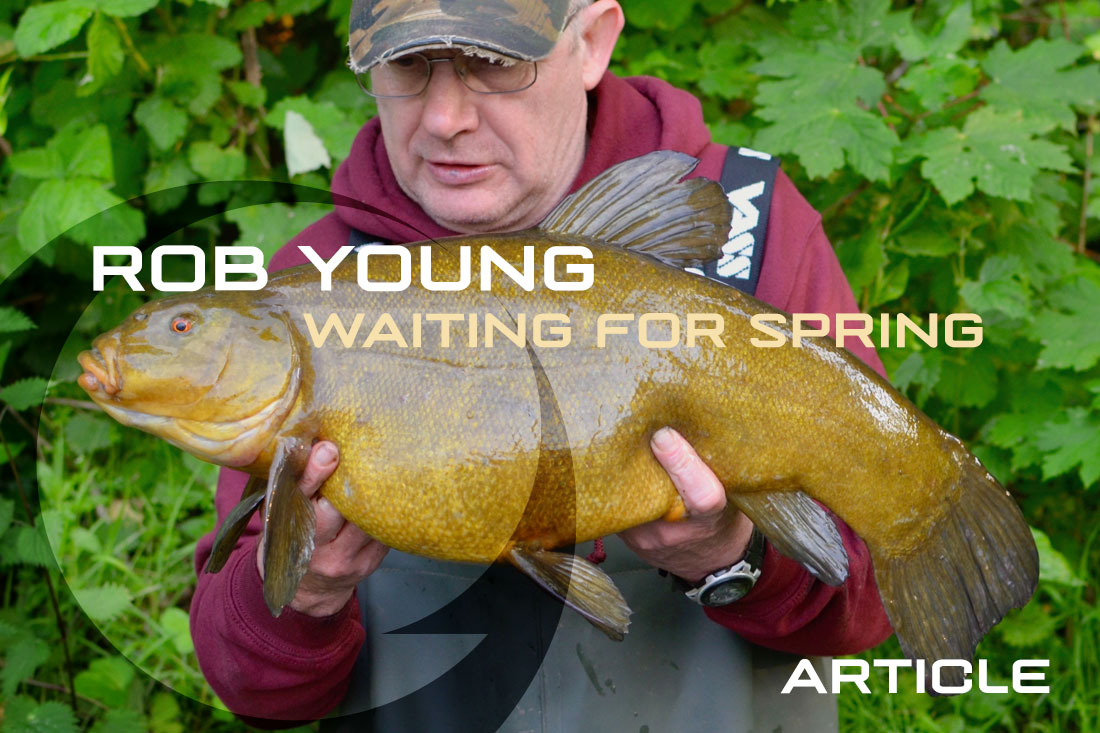
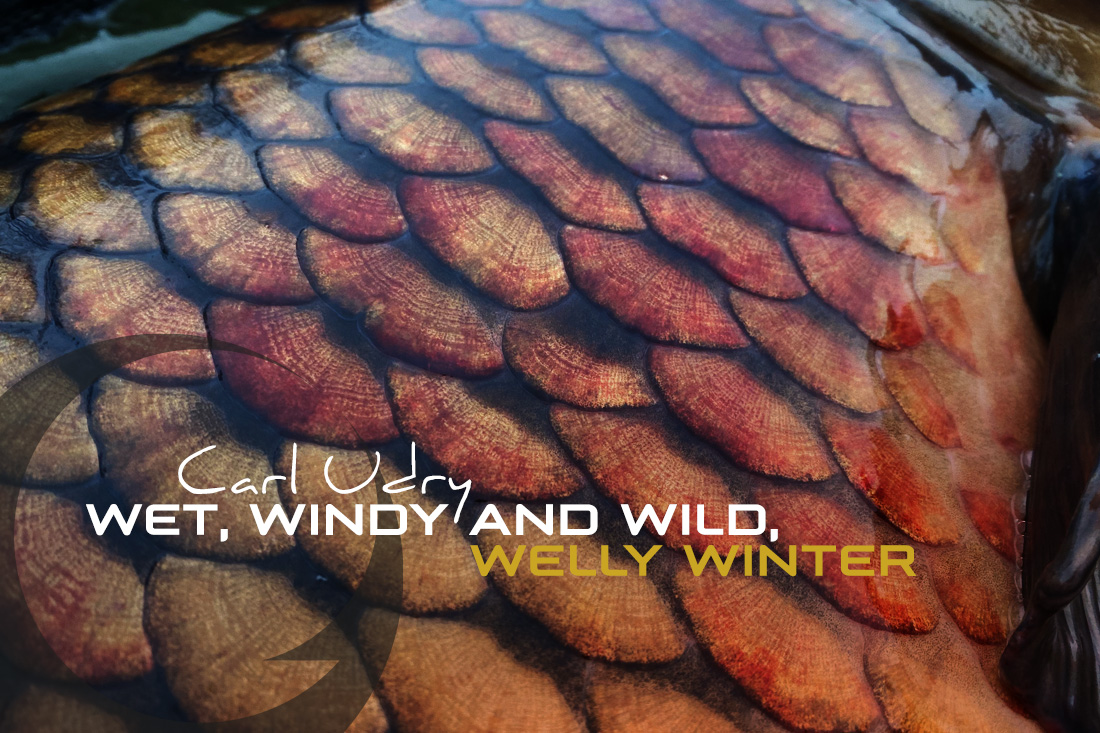
Leave A Comment